#19th century antique urns
Text
The walls of our Twig are bedecked with large abstract paintings, large abstract canvas, and beautifully hanged 19th century antique urns, statues and sculpture. She loves garden and have good collection of garden antiques and pots are in abundance. Also now concentrate on selling antique furniture and furnishing an orangery.
#large abstract paintings#large abstract canvas#19th century antique urns#19th century statues#19th century sculpture#garden antiques#antique furniture#furnishing an orangery#Antiques and Interiors Shop in Tetbury#London#the Cotswolds#Cheshire#Bath#Bristol. Cheltenham#Gloucester#Cirencester#Newbury#Oxford and America
0 notes
Text

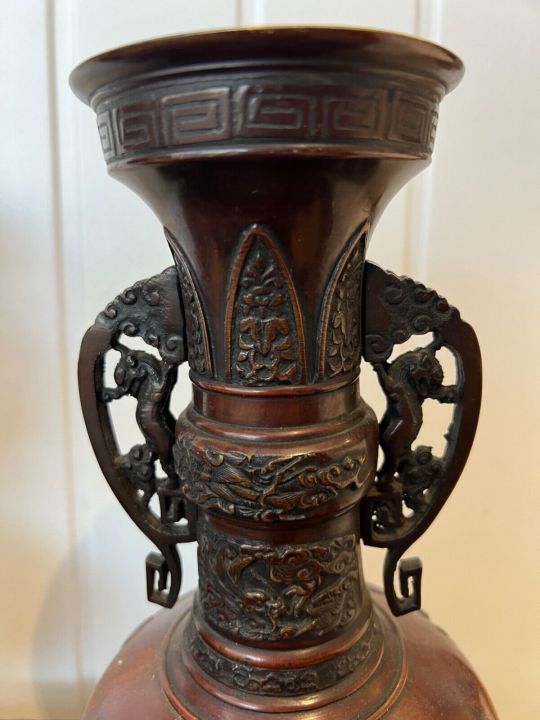

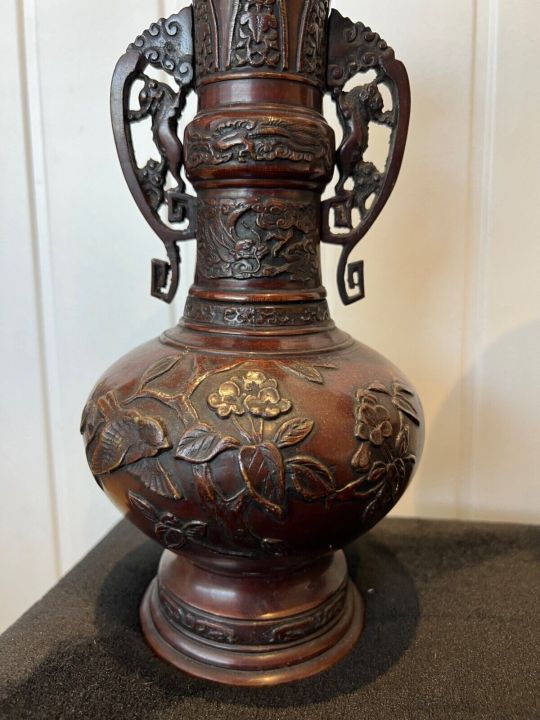

PAIR OF 19th CENTURY RARE ORIENTAL ANTIQUE JAPANESE URN MEIJI CAST BRONZE VASES ebay vintage-oil-paintings
3 notes
·
View notes
Text
Lamp table, Tripod table - Fine late 19th century mahogany candle stand. Turned lipped top over a finely executed column, with fluted stem and carved acanthus leaf ballister. Raised on three carved cabriole legs terminating in acanthus leaf pad feet.
#Antique Candle Stand#urn table#kettle stand#small antique table#antique tables#tripod tables#antique tripod tables#antique occasional tables#antique tilt top tables#tilt top tables#antique lamp tables#lamp table#antique etageres#Thakeham Furniture
0 notes
Text
Rediscovering Elegance: The Timeless Allure of Antique Jewelry
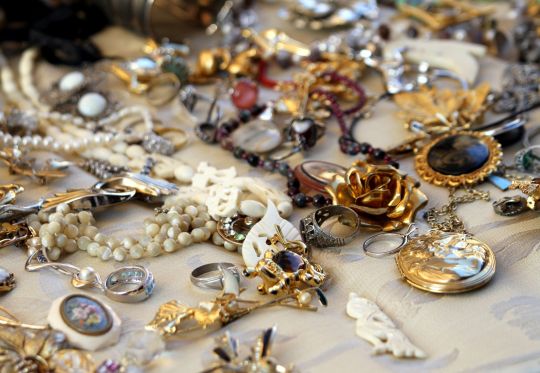
Antique jewelry serves as a captivating portal to the past, a journey through the annals of history and culture. Beyond their exquisite craftsmanship and intrinsic value, these pieces tell tales of bygone eras, each gem and metal imbued with a rich narrative. From Victorian brooches to Art Deco rings, antique jewelry stands as a testament to the enduring allure of craftsmanship and design. In this exploration, we delve into the world of antique jewelry, unraveling its history, significance, and timeless appeal.
The Historical Tapestry:
Antique jewelry encapsulates a vast array of styles and periods, reflecting the aesthetic preferences of different epochs. The Victorian era, spanning from 1837 to 1901, birthed intricate pieces marked by sentimental motifs and a penchant for nature-inspired designs. Lockets, cameos, and mourning jewelry were popular during this period, often adorned with pearls, diamonds, and colored gemstones.
The Art Nouveau movement, flourishing from the late 19th to early 20th century, embraced sinuous lines and organic forms, drawing inspiration from nature. Floral motifs, ethereal nymphs, and flowing curves dominated the jewelry of this era, creating pieces that are not only beautiful but also embody the artistic spirit of the time.
The Art Deco period, emerging in the 1920s and 1930s, brought a stark departure from the organic forms of Art Nouveau. Characterized by geometric shapes, bold colors, and a fascination with symmetry, Art Deco jewelry exudes glamour and sophistication. The use of platinum, diamonds, and vibrant gemstones, such as emeralds and sapphires, defined this era's jewelry style.
Significance and Symbolism:
Antique jewelry often holds deeper meanings and symbolism, adding layers of significance to their aesthetic appeal. Engagement rings from the Victorian era, for instance, were adorned with intricate symbolic motifs like snakes (eternity), hearts (love), and flowers (fidelity). Art Nouveau jewelry often featured symbols of transformation and renewal, mirroring the era's focus on nature and the human form.
Mourning jewelry, prevalent in the Victorian era, was crafted to commemorate lost loved ones. These pieces incorporated materials such as jet, onyx, and even human hair, and were adorned with somber symbols like urns and weeping willows. Each piece told a poignant story of grief and remembrance.
The Timeless Appeal:
Antique jewelry's enduring popularity can be attributed to its unparalleled craftsmanship and the stories woven into each piece. In a world dominated by mass-produced items, these treasures stand as unique, irreplaceable artifacts. The meticulous handwork, attention to detail, and the use of high-quality materials contribute to the enduring quality of antique jewelry.
Moreover, these pieces often carry a sense of nostalgia, connecting wearers to a bygone era. The patina that develops on the metals over time adds to the charm, telling the tale of years gone by. Collectors and enthusiasts alike find joy in the hunt for these treasures, each piece a tangible link to the craftsmanship and style of a specific era.
Conclusion:
Antique jewelry is more than a collection of precious metals and gemstones; it is a living testament to the artistry, culture, and sentiments of days gone by. As we continue to evolve in the modern era, the allure of these timeless treasures persists, inviting us to rediscover elegance in the intricate details and profound stories embedded within each piece. In a world that often moves too swiftly, antique jewelry serves as a reminder that true beauty transcends time.
1 note
·
View note
Photo
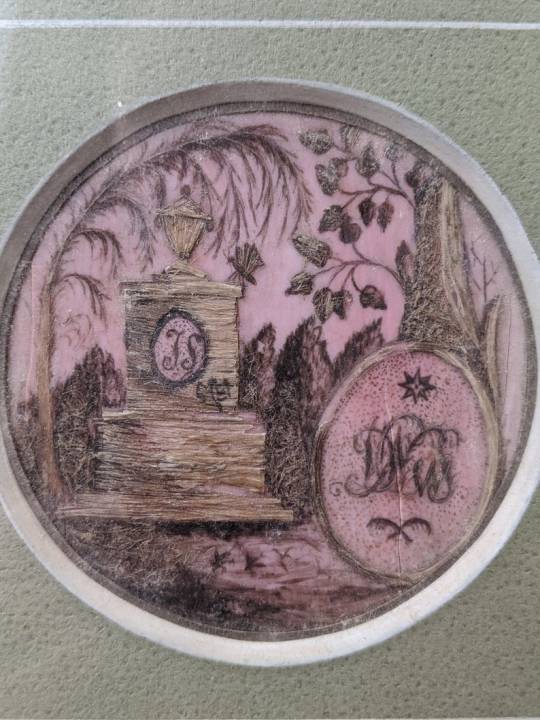

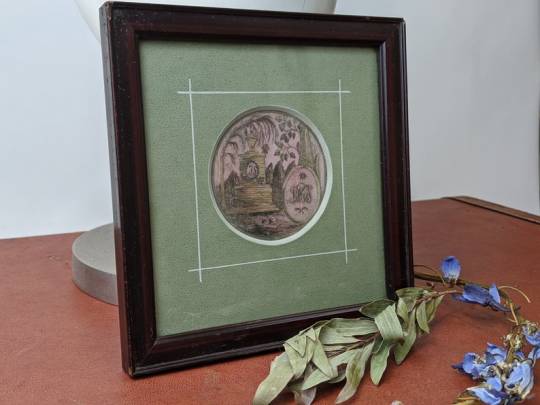
Antique Sepia Hair Art from WitchyVintageFinds
Sepia is the art of using hair as a medium in painting. The hair is cut into tiny pieces or pulverized and suspended in paint and brushed onto a vellum. These often were made as mourning pieces, such as this one, and depict grave scenes with weeping willows and urns.
#antique#antique art#vintage#vintage art#19th century#victorian#victorian art#sepia#hair art#hair#human hair#sepia hair art#sepia art#mourning#victorian mourning#cemetery#graveyard#headstone#urn#wall art
77 notes
·
View notes
Photo

Could never quite understand the Victorian's obsession with funereal urns as architectural adornments. In various states of repair, they're everywhere - all you have to do is look up. Typical late 19th century Inner West skyline. Stanmore.
#late victorian-era architecture#funeral urns#architectural elements#19th century#skyline#vintage#antique#decorative#1890's#inner west sydney
25 notes
·
View notes
Photo

I recently bought some antique portrait photos at a yard sale. The seller didn't know anything about the people in them, and there was no information other than that of the photographers (in this case, Lloyd Art Studio at 44 Third St., Troy, NY). This one is the best of the bunch, the most striking visually. I'd love the prop flower urn and pedestal for my own garden!
#antique photo#full-length#portrait#vintage photography#lloyd art studio#flower urn#garden pedestal#19th century#dress#costume#woman's hat#haunted garden
17 notes
·
View notes
Text
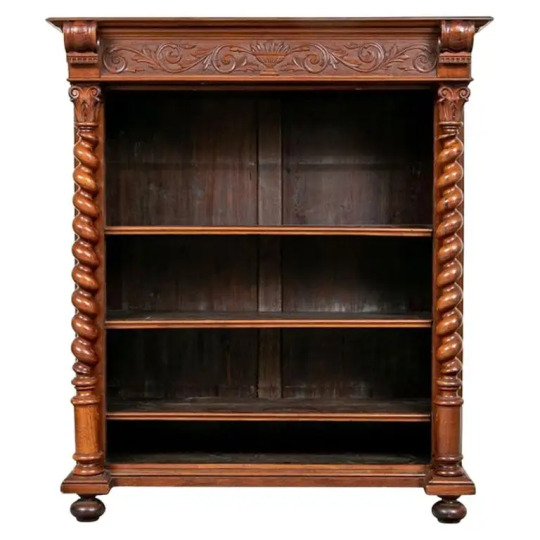

Rustic Antique Carved Barley Twist Mahogany Bookcase, 19th century
Classic antique barley twist bookcase with a well carved frieze with stippled back and foliate scrolls having a center urn. Open scrolls are above the barley twist supports with leafy capitals. With an oak back and four oak adjustable shelves (one not in the photo). Raised on bun feet. Fine age patina and smooth hand.
34 notes
·
View notes
Photo

This is wonderful- Soraya, mother of 6, turned a 19th century country store into a home.

The raw timber walls in the entrance hall have been painted white to bring light into the otherwise dark hall. On the high wooden shelf by the stairs, Soraya placed her collection of wooden hat templates.
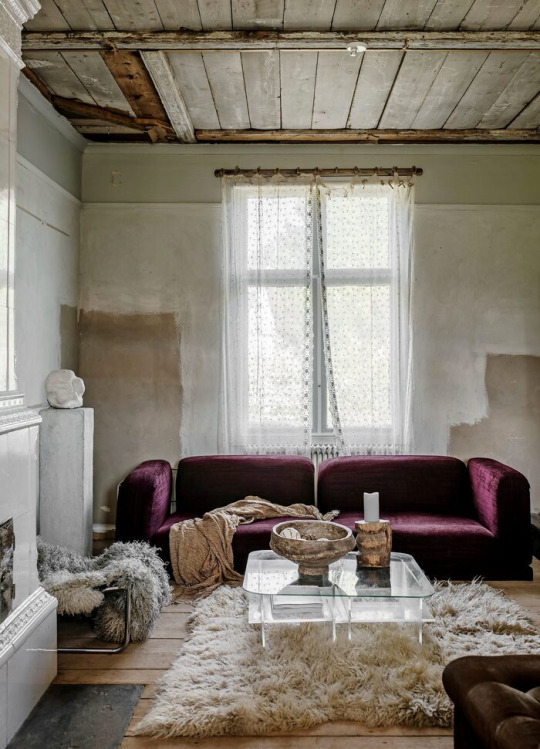
In the small of 2 living rooms, the sofa and carpet are second hand, the table Soraya put together from two bases and specially ordered a glass top. The pedestal on the left was carved by Soraya, then covered with mortar. On top is a sculpture she made of clay. Soraya loves to experiment with wall paint. "I test and play until I get a shade that I like."
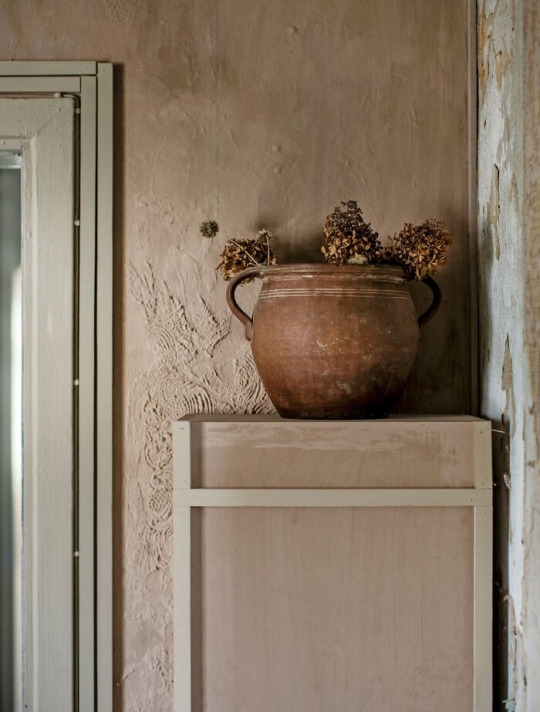
A pedestal of her own design that Soraya made herself has an old antique urn on top with some dried hydrangea twigs.
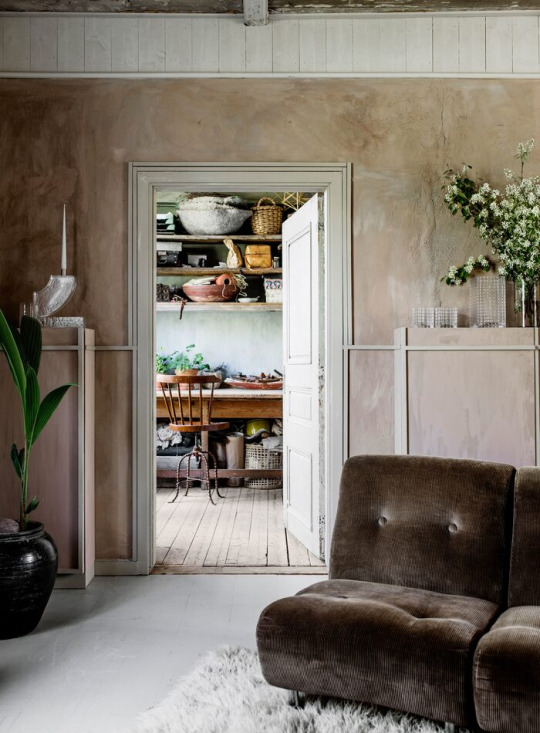
Adjacent to the living room is Soraya's workshop.

Soraya's creative workshop has a beautiful old workbench, flea market chair and shelves made of scrap wood. The walls are in a green tone and in the ceiling she has a matching wallpaper with an Asian pattern.

To hide the cable entanglement, Soraya built a small ledge along the wall, it has since been stained and is now used as a low side table.

Despite their differences, the flea market chairs fit perfectly together: The table is from France with room for many. Along the wall panels, Soraya hung knob strips for storing kitchen towels, aprons and kitchen utensils.

After collecting baskets for a few years, they were ready to be hung from the ceiling. The roll of paper on the wall is the children’s to-do list.
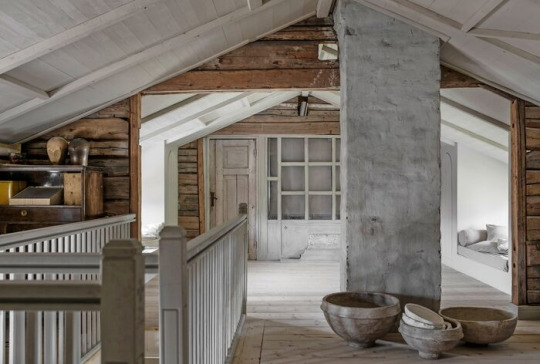
The upper floor houses a bunch of children's rooms but also a larger living room. Behind the glass wall, the eldest son was given a private room. The window sills on each long side are equipped with daybeds.
https://skonahem.com/inspirerande-hem/inredaren-bytte-storstad-mot-lantlig-drom-en-lanthandel-fran-1800-talet/
86 notes
·
View notes
Text
hA I haven't been feeling well; but here's a post about my experience working with Vual!!
INTRODUCTION
“FALLEN ANGEL and 47th of the 72 SPIRITS OF SOLOMON. Once a member of the angelic order of powers, Vual is a duke in HELL with 37 LEGIONs of DEMONs under his command. He appears first as an enormous dromedary camel, then changes into human form and speaks in imperfect Egyptian. He procures the love of women; knows the past, present, and future; and makes enemies become friends.”-p.g281 The Encyclopedia of Demons and Demonology(Rosemary Ellen Guiley).
Other names:
Uvall
Voval
Rulerships:
Vual rules over many things. But mainly he rules over things that relate to communication; for example, he’s known to rule over: ancient languages, clarity of mind, deep thought, divination, romantic attraction, and restoration of bonds(friendly or otherwise).
There are a few rules regarding working with him:
Be polite.
Just like with any other deity; Vual requires respect. If you are disrespectful(i.e calling him a nickname, or a b!tch, or anything else like that), he will leave and never return to you.
Respect yourself.
Although Vual is extremely patient; he has no problem checking you into your place. If you are disrespectful towards yourself in his presence; he will remind you of who you are, and what you deserve from everyone. Including yourself.
His History:
When the tyrant god, Jehovah, usurped the Throne of the Universe and punished the gods who had opposed him, many were immediately banished to Hell, the land of torment. However, some deities were taken and split in half as punishment. This is what happened with the god Khonsu (god of the moon), whose other half became Vual. After this, Khonsu remained with the Egyptians but Vual left and joined the kingdom of Hell that is ruled by Leviathan (the other two kingdoms are ruled by Lucifer and Satan). Here, Vual was efficient and trustworthy enough to become one of the military commanders as a Duke.
Elements and offerings:
His Elements are *Akasha and Air. Feel free to give him offerings of dry red wine, veal, camel meat, goat meat, eggs (chicken or ostrich), dates, bitter oranges, lanterns, ostrich feathers, fine-quality blank journals (especially with intricate covers), fountain pens, quills, graphite or black urns (with golden rims), pyramid figurines, art nouveau, secretaire desks, antique leather armchairs, mandrake, ivy, weeping willow, mahogany, ebony, morion quartz, dark amethyst, garnet, tigers eye, elongated pebbles (not flat), bronze-gold cloth or silk, old silver coins (the older the better), obsidian mirrors, floating wick lamps, small dark-green jewelry bags (transparent), Egyptian-styled incense (Eye of Horus, etc). If for nothing else; I also found that he accepts intricate drawings of Dromedaries.
*Akasha: “Akasha or Akash means space or sky or æther in traditional Indian cosmology, depending on the religion. The term has also been adopted in Western occultism and spiritualism in the late 19th century. In many modern Indo-Aryan languages and Dravidian languages the corresponding word retains a generic meaning of "sky".”(https://en.wikipedia.org/wiki/Akasha)
His Teachings & What he can do:
Vual will assist you in your divinatory practices, he may also help with learning ancient languages, and he might even help you achieve mental clarity while learning about anything! Another specialty of his is reforming relationships* of all kinds!
*Although some may argue that he only reforms/creates loving relationships only, he will advise against creating/reforming a loving relationship(in my experience), if there is 1. No reciprocation of feelings, or 2. The relationship ended in flames. He is a caring deity; and wants nothing but the best for those who work with him.
Personality:
Vual’s personality is like having your moon sign in your twelfth house. On the surface, he may seem cold, analytical, studious, introspective, or even closed off. He has a strong dislike towards loud noises, and unruliness. As he much prefers order and peaceful atmospheres! He often supports the usage of reasoning and logic, but may indulge in speaking of his inspirations and desires. Vual deeply appreciates elaborate art, landmarks of majesty and grandeur, traveling alone, effort put into learning, and the pursuit of knowledge put over physical strength or social graces.
The people Vual tends to value are mystics, magic users, and scholars. He hates humorous jokes being made towards him or being treated in derogatory ways (if you call him a nickname, he will leave and not return). With those whom he appreciates, Vual is steadfast and enjoys assisting them in their paths.

Thanks for reading this far!! And I'm super duper sorry for the inactivity!!! I'll try my best to be more active!
Have a wonderful day and stay safe!!
#demonology#pagan witch#baby witch#lesbian witch#advanced witchcraft#witches#witchblr#witch community#magick#witchery#witchythings#lgbtq witch#wlw witch#wlw community
13 notes
·
View notes
Text

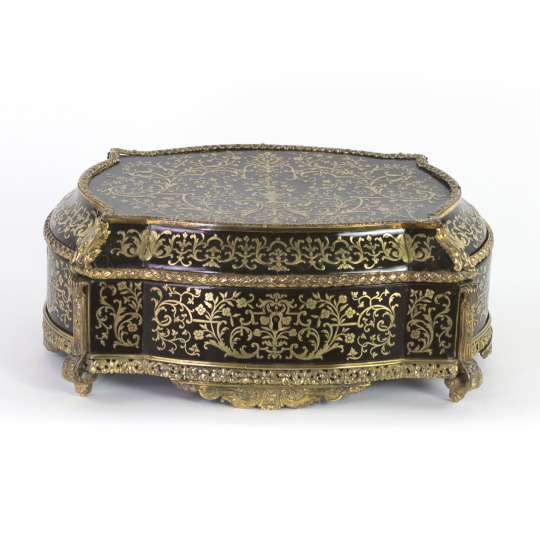





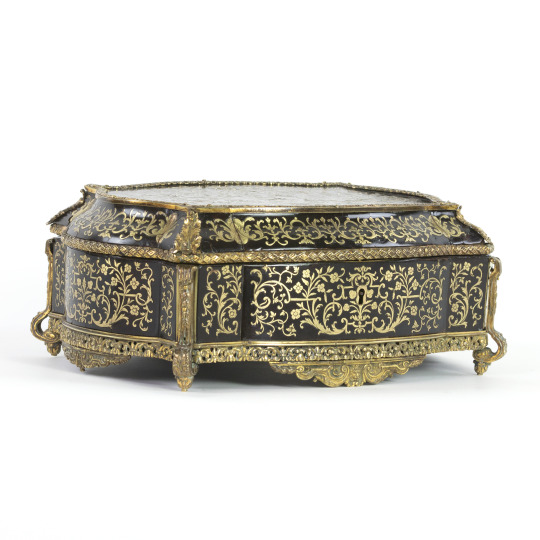
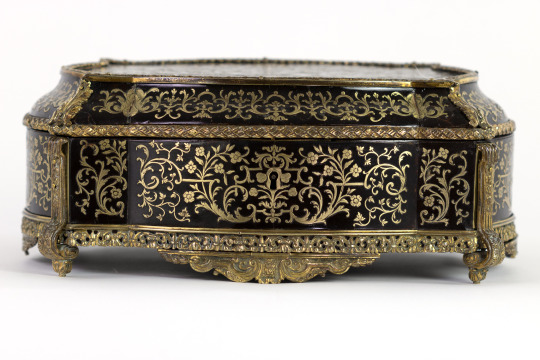

Sui generis: A Luxurious Ebony Boulle Box With Ormolu Mounts, French 19th Century. Cartouche-form lid featuring an intricate surround of inlaid brass presents serenity and abundance with meandering olive branches, leaves & fruit along with scrolling acanthus, engraved flowers; the centering element is a profusion of flowers arranged in a standing urn set upon a table balanced within acanthus scrollwork. Of exceptional quality; French Circa 1830-50. height: 8 in. 20 cm., width: 13 in. 33 cm., depth: 11 in. 28 cm. https://www.gardencourtantiques.com/shop/antique-ebony-boulle-box-ormolu-mounts-french-19th-century/
#luxury#luxurious#luxurylifestyle#luxury life in dubai#ormolu#boulle#boulle marquetry#toilette box#jewelry box#vintage box#antique box#maximalism#interior design#san francisco#garden court#garden court antiques#decorative antiques#regency#19th century
5 notes
·
View notes
Text
youtube
#topiary box plants#real topiary trees#large abstract paintings#garden antiques#antique furniture#wall decor paintings#19th century furniture#19th century statues#19th century antique urn#furnishing an orangery#hand painted lampshades#Youtube
0 notes
Photo

Classical Urn, Jacques-Louis David, 18th-19th century, Harvard Art Museums: Drawings
Harvard Art Museums/Fogg Museum, Gift of Mr. and Mrs. Charles E. Slatkin
Size: 12.1 x 11 cm (4 3/4 x 4 5/16 in.)
Medium: Brown ink and brown wash on cream antique laid paper
https://www.harvardartmuseums.org/collections/object/297365
2 notes
·
View notes
Text
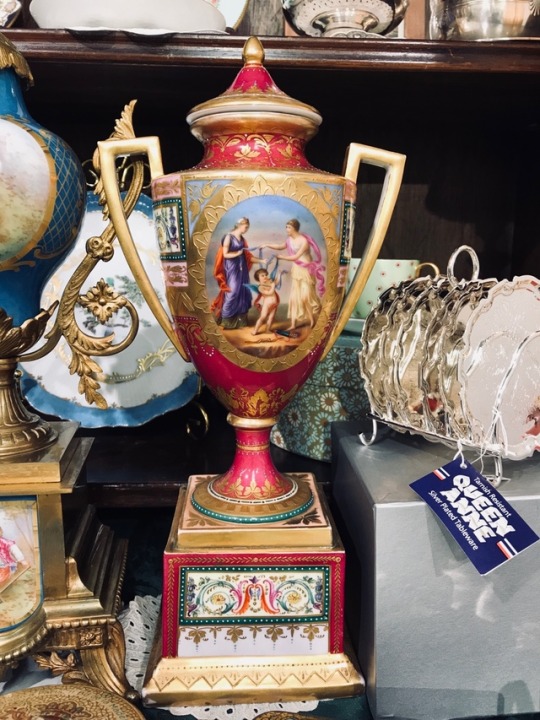


19世紀VIENNA 手彩色蓋つき壷 極上品
0 notes
Note
🌻
I spend a lot of time thinking about how I’d ideally decorate my house/living space, if I had infinite money/resources/etc and could instantly obtain any antique on the market. I have a very specific aesthetic I’d want.
When I was a little kid I had a rug in my room that was off-white, with a pale green leaf pattern on it, and as a result (I think) I find that combination of colors and patterns extremely homey and relaxing etc. So most of the basic textiles in my house (i.e. upholstery, rugs) would be variations on that theme. Except, ya know, with a little bit of southern European flare, like these nice Fortunys:
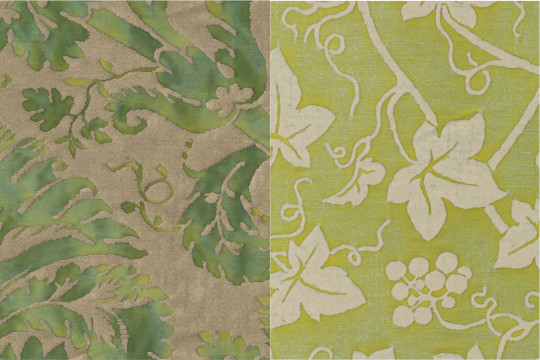
Probably some more realistic-styled leaf patterns as well, to keep things from getting too formal (there’s a sort of “relaxed but refined” look I’m going for). Slightly more uh, energetic floral patterns would be mixed in here an there, mostly on pillows and things, to add some extra visual interest. But not too much, the overall look should be fairly visually calm.
As for furniture: big, heavy, traditional and clean lines. Traditional Japanese carpentry is beautiful (and tremendously expensive, but remember, infinite resources!) and has the exact look I’m talking about. Shaker furniture as well, though it’s a little lighter-weight in general. Anything that looks like you might find it in a frontier-era mountain man’s cabin. Necessarily, a huge and very sturdy desk. Lots of oak and perhaps some mahogany, that sort of vibe.
And then, against the backdrop of clean lines and calming patterns, the occasional splash of, uh, energy! from something much more visually interesting. Like, somewhere, one of these 19th century Chinese armoires:

As for decorations, porcelain! Imari ware! Plates, urns!

WANT! WANT! WANT! (this shit is like, literal thousands of dollars *sadface but I can't put one because it would conflict with the following close-paren*). On the walls: 19th century European botanical and zoological illustrations, especially of invertebrates (worms, jellyfish, so on). Meiji-Shōwa era Japanese prints, landscapes and botanical/zoological.
What else... hmm, there’s a lot more but I’m getting kinda tired so maybe I’ll add it in a reblog later haha.
5 notes
·
View notes
Photo

A handsome pair of 19th century bronze, neoclassic urns. With beautifully formed serpentine handles. c. 1880 - 1890 Ref No. 8370 #antiques #interiordesign #vintage #antique #instagood #interiors #Photooftheday #picoftheday #antiquesdealersofinstagram #interiordecorating #antiquesforsale https://www.instagram.com/p/B78LaeLH3Q-/?igshid=pcepj5waunw1
#antiques#interiordesign#vintage#antique#instagood#interiors#photooftheday#picoftheday#antiquesdealersofinstagram#interiordecorating#antiquesforsale
7 notes
·
View notes